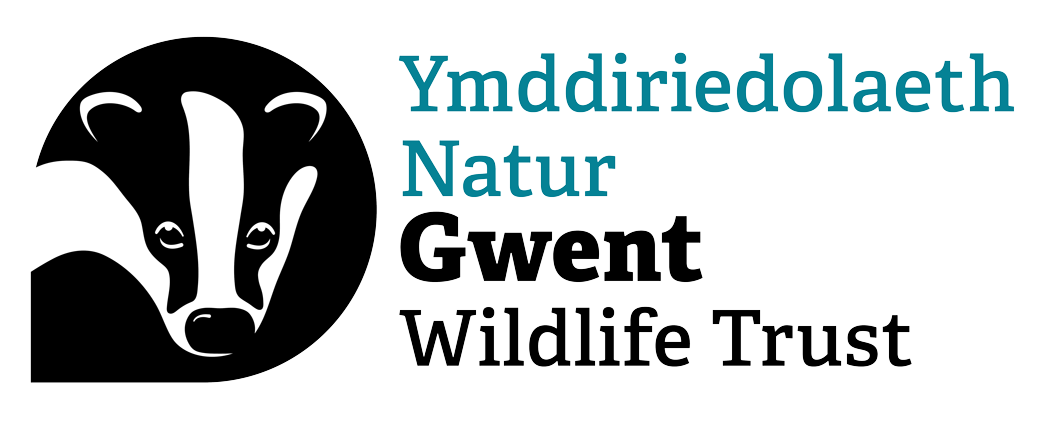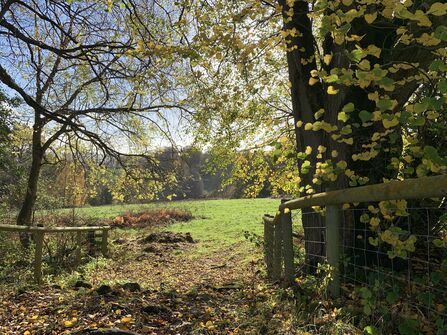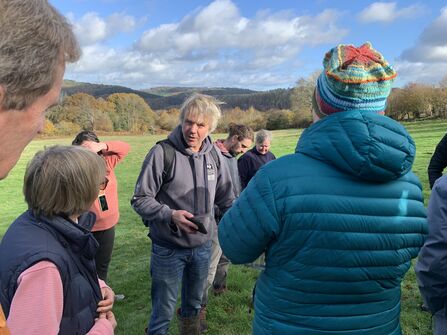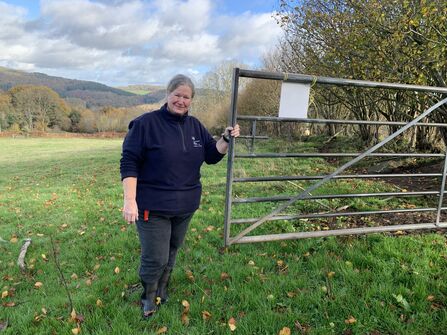After days of relentless rain, the day of Gwent Wildlife Trust’s Wilding Walk and Talk dawned clear and bright, the remnants of autumn colour still aflame in the trees and hedgerows.
The event, attended by around 20 people, kicked off with a talk in the ancient stone barn at Pentwyn Farm, where walk and talk leader, Joe Ryder, Gwent Wildlife Trust Conservation Grazing Officer, set the scene.





